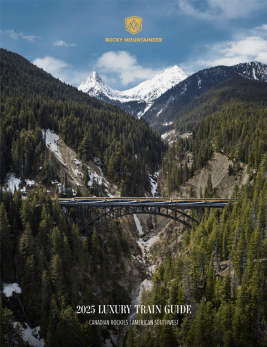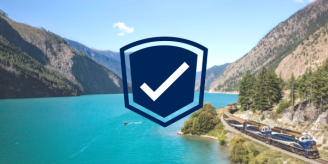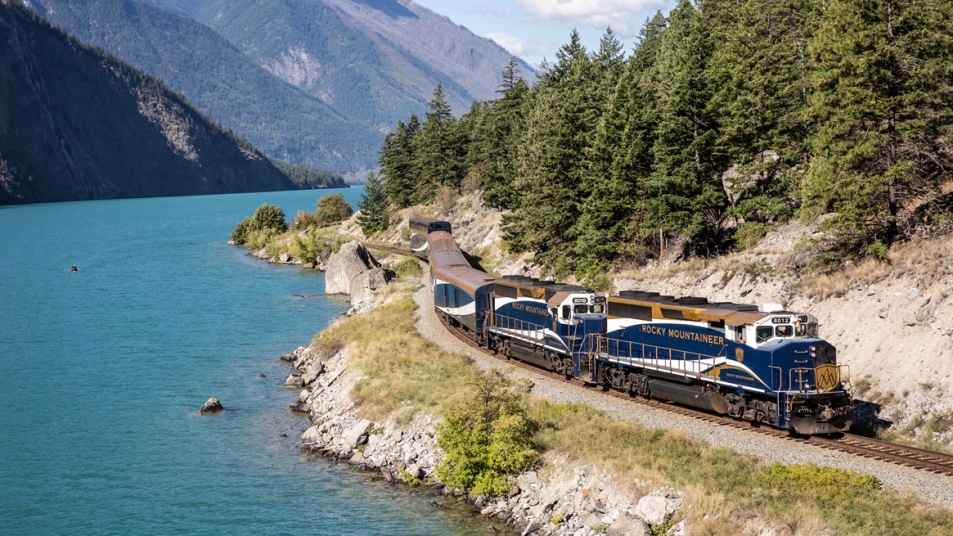
At Rocky Mountaineer, we are proud to provide passenger rail service through Western Canada and the American Southwest - and this means our tracks are shared by many other iconic trains. What does this mean for your journey onboard?
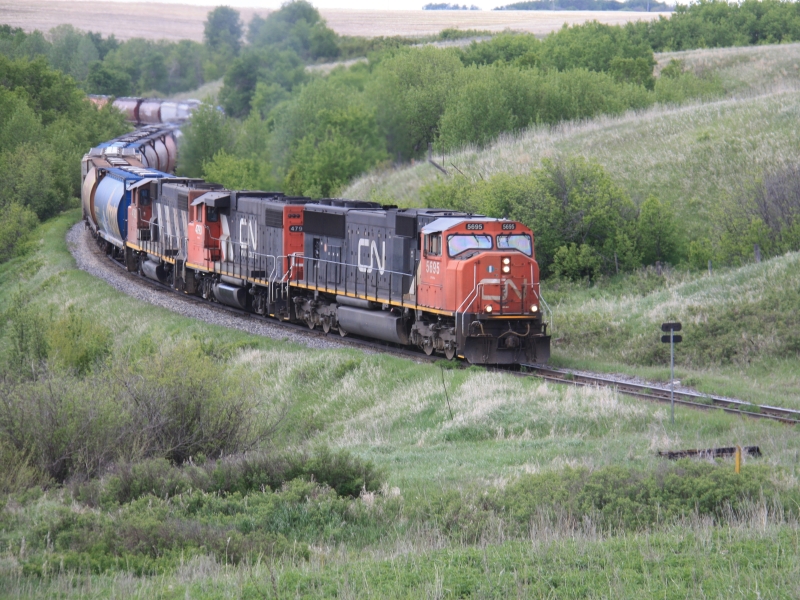
Freight trains in Canada can stretch over 12,000 feet - about half the height of Mount Everest. Photo by Dan Loran on Unsplash.
Train Meets
In many of the regions we journey through, trains travel in both directions on a single set of tracks. This means that when a train meets another train coming in the opposite direction, one train has to pull into a siding to allow the other one to pass through. This is called a train meet.
These sidings are low-speed sections of track that divert from the main track. Think of it like driving on a single-lane road - if a car approaches you, one car will need to use a gravel pullout to pull over and let the other driver pass by.
Similar to air travel, there is rail traffic control that monitors all train traffic on the rail lines and determines the time and location of where these trains meet, in order to avoid collisions and keep trains moving as seamlessly as possible.
So, what’s happening when there’s a train meet while you’re onboard?
Often, freight trains are too long to fit into the sidings. Rocky Mountaineer is much shorter than these trains, so we pull over to let the longer ones pass through. If you’ve ever been stopped at a railroad crossing for a freight train to pass, you may have noticed how long some of them are - the average Canadian freight train can stretch to 12,000 feet or almost four kilometers (2.5 miles).
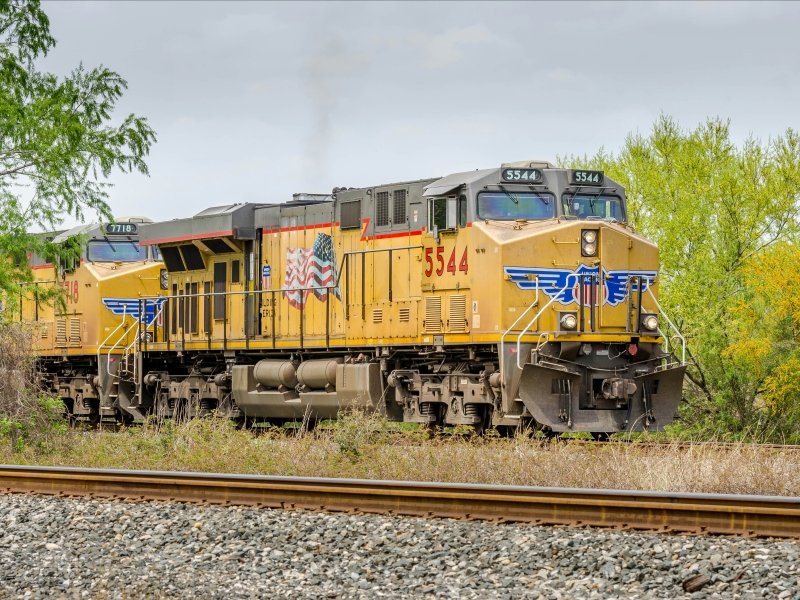
On Rockies to the Red Rocks, we travel on Union Pacific Railroad tracks. Keep your eyes peeled for their yellow train cars during train meets or on opposite railroad tracks. Photo by Eddie Bugajewski on Unsplash.
We operate primarily on Canadian Pacific Kansas City (formerly Canadian Pacific) Railway and Canadian National Railway tracks, so you are most likely to spot their iconic CPKC and CN trains. On Rockies to the Red Rocks, you’re most likely to spot the yellow Union Pacific trains.
We build these train meets into our schedules, which is why you see a range of arrival times noted in your itinerary. These arrival times can also be found under Preparing to Go.
On our Canadian routes First Passage to the West, Journey through the Clouds, and Rainforest to Gold Rush, a typical day onboard the train ranges from 11-14 hours. Our Rockies to the Red Rocks route ranges from 5-6 hours between Moab and Glenwood Springs and 8-10 hours between Glenwood Springs and Denver. We have a lot of ground to cover, travelling up to 500 kilometers (310 miles) each day.
Thankfully, a Rocky Mountaineer journey isn’t just about getting from points A to B, but about taking the time to live in the moment and indulge in the luxury of time.
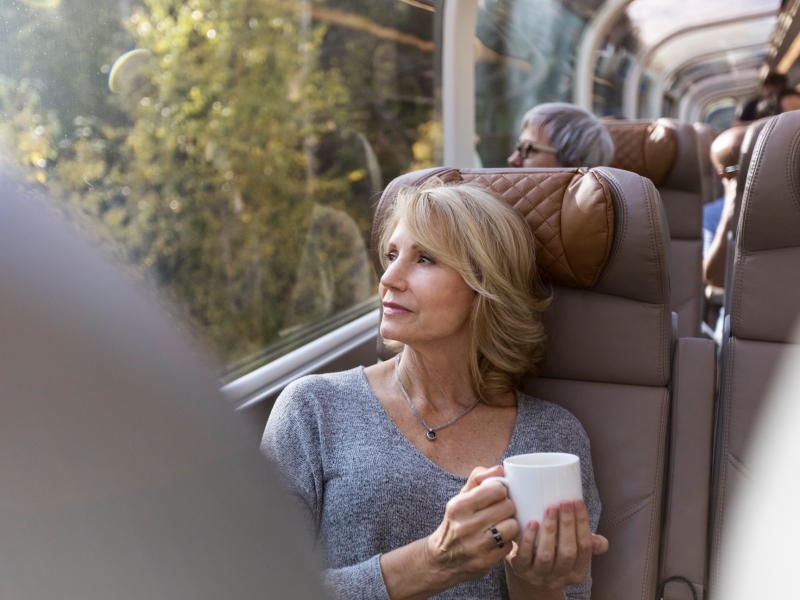
Sit back and smell the coffee - enjoy the gift of time during your Rocky Mountaineer journey.
Maximizing the Gift of Time
Rocky Mountaineer rail journeys are designed for our guests to sit back, relax, and enjoy not only the destinations - but the breathtaking journey to get there. If you’ve ever looked at some of our routes on a map, you may have noticed you could drive from Vancouver to Banff, for example, in just ten hours by car.
Onboard Rocky Mountaineer, there is no reason to rush. We split this route into a luxurious two-day journey, maximizing your time onboard and your views of the Rocky Mountains and American Southwest. This is the same reason we only journey by daylight from April to October – the months where the days are long enough to maximize the stunning scenery.
Time is valuable, and onboard Rocky Mountaineer, we make the most of it. It’s time to slow down and unwind, take in the moment, and connect with yourself and your travel companions. What better way to do that than with more time onboard?
Tips & Tricks for Train Meets and Rail Travel
As rail travel in North America is occasionally subject to unforeseen delays (separate from scheduled train meets), we do not recommend making dinner reservations or onward travel arrangements on rail travel days.
Train meets can occur in beautiful scenic locations. Depending on which route you're on, this is a great time to head to the GoldLeaf Service outdoor viewing platform or SilverLeaf Service viewing area and get the perfect photo without the wind in your face.
Keep your eyes peeled on the rail lines, especially tracks heading the opposite direction. What other iconic trains can you spot?
If you prefer to move around the train while it is not in motion, this is a great time to stretch your legs or take a washroom break.
While onboard, don’t forget to check out your complimentary copies of Journeys Magazine and the Mile Post. Read on to learn more about the regions and towns you’re traveling through, what landmarks you’re seeing, and find some word games or space for note taking.


